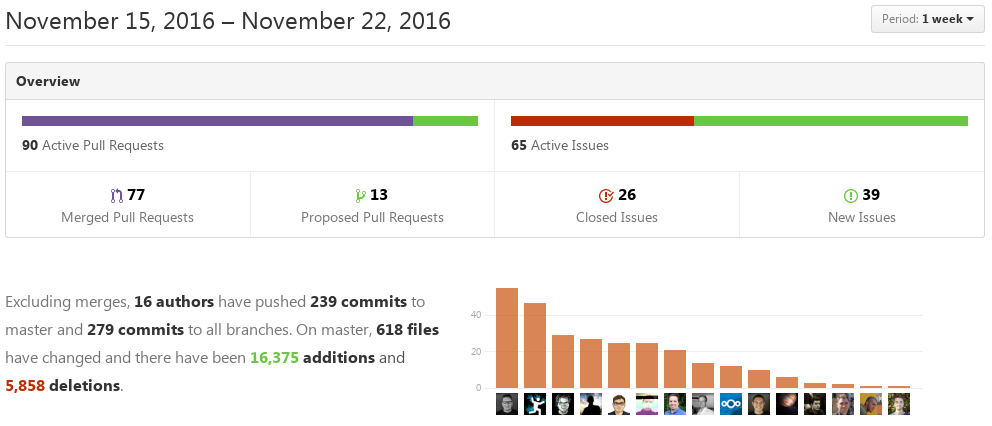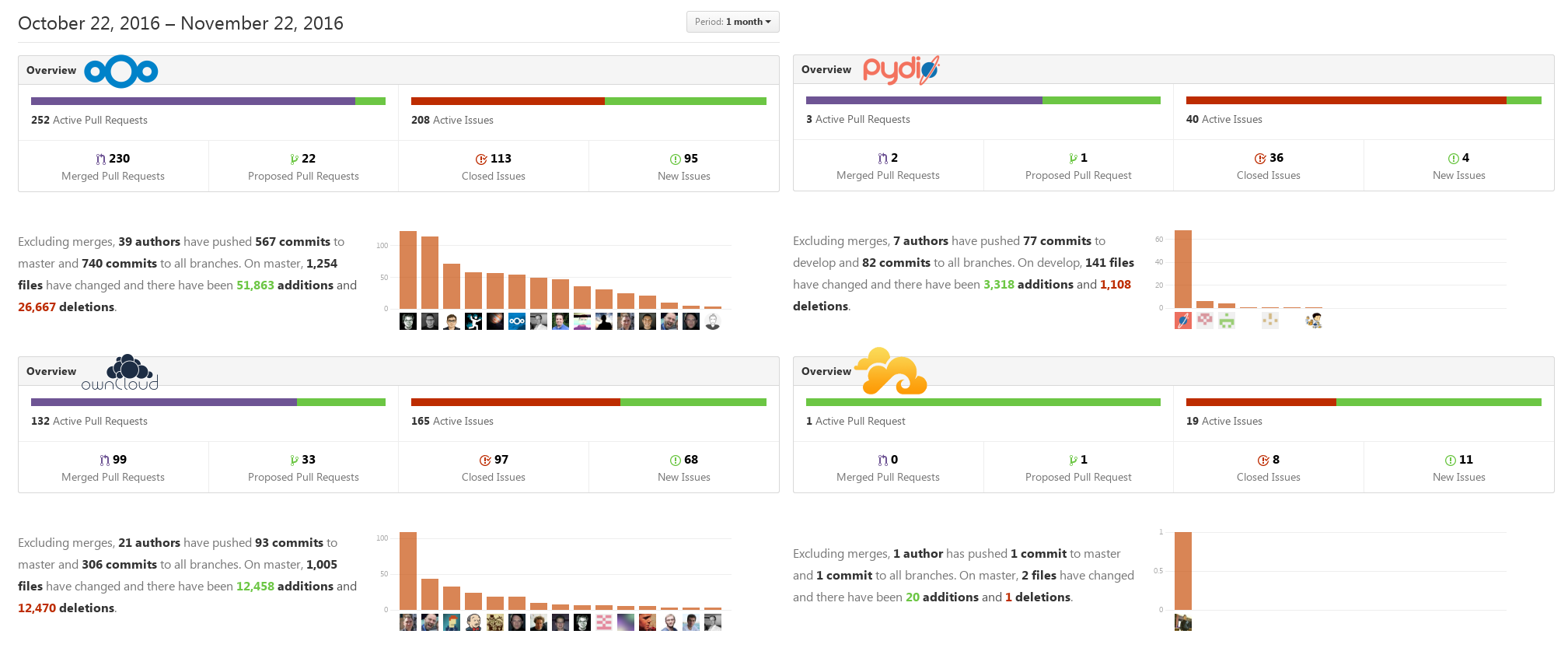Originally published at: Nextcloud: the most active open source file sync and share project!* - Nextcloud
Nextcloud has been making steady progress, with our Windows Mobile client and the CalDAV Outlook Synchronizer merely the last in a long list of great things coming from our community. Nextcloud 11 Beta is ready for testing, introducing many great features, showing how active our development is.

Statistics
Looking at Github Pulse of last week above you can see that in the 7 days before we wrote this blog, Nextcloud merged an impressive 239 commits to the server code*! To not just look at numbers in a vacuum, we compare with other open source file sync and share solutions:
Nextcloud, Pydio, Seafile and ownCloud
Nextcloud has 5 developers with over 50 commits last month, 2 even over 100. Those who know the company will see four of these five are employees of Nextcloud GmbH, the fifth being the super-active community contributor John Molakvoæ. With 17 engineers on the payroll, the company employs 9 of the top ten contributors in the last half year but it isn’t all about one month, so let’s look a bit further.
Commit graph
Here's a graph of the development the last year, this time with the other projects below.
Top is Nextcloud, below are ownCloud, Pydio and Seafile. The last two were resized to scale.
Nextcloud had a super active week last week, as we had a hackweek just before feature freeze! You can see that Pydio has a rather cyclical development with periods of greater activity followed by less activity. According to the Pydio team (who we’ve asked) their contribution cycles are “not really a pre-established sprint, but more a natural “new major features > bugfixes > community feedback > specs for next features” cycle”. We would guess that the activity pattern in the other two projects probably has to do with the forks (EDIT: see the comments below from a Seafile developer - the German part of the fork did not contribute to the code so it made no difference; moreover, the statistics are skewed against seafile due to how they work).
OpenHub
There is a caveat with the statistics from the Server repository - a lot of work is happening in other repositories in the Nextcloud project. openHub shows statistics from an entire project and while not entirely accurate either (it is hard to keep track of all the repositories being added all the time to Nextcloud) it shows we're doing really well! Here are the commit (until November 15) and contributor graphs (until October). You see the trends visible on github here, too - Nextcloud growing fast since its inception, with a great boost in the last 3 months.
Nextcloud, ownCloud, Pydio and Seafile with a 5 year graph.
We’re especially happy with this spike in new contributors:

All this is of course entirely thanks to our awesome community of contributors, users and customers who have been active and involved in making Nextcloud a super secure, easy to use way to sync and share files, contacts, calendars and more. It shows what an open, collaborative project can do! Of course, it helps that Nextcloud is supported by a healthy business dedicated to real, open source, transparent development. Want to get involved? See what you can do to make a difference!
* All according to statistics on Github and OpenHub. All stats screenshotted on November 21 or 22, links there so you can compare for yourself. Note that not all commits are equal. Some change one line, others introduce whole features! Equally, pull requests can add a big feature or fix a one-line bug, or just backport the same code to an earlier release to fix a bug. In general, don’t take statistics as gospel but compare multiple numbers yourself to get an idea of what is really going on. Also, of course all trademarks belong to their respective owners and being mentioned here means in no way an endorsement for us of them or from them of us!
